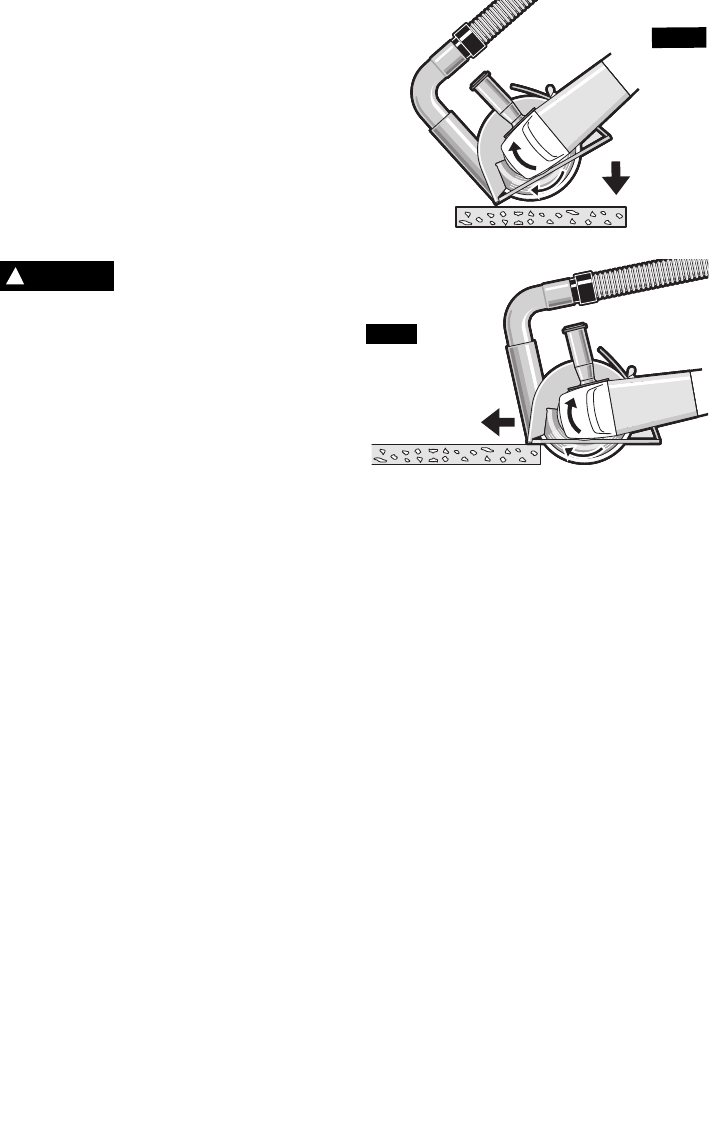
-22-
Masonry / Concrete Cutting
With this grinder it is possible to perform
cutting of concrete and masonry materials.
When cutting, work with moderate feed,
adapted to the material being cut.
Always follow precautions for kickback.
Operate the tool with a dust extraction system
and personal dust protection, e.g. respirator,
dust mask, etc. The vacuum used for this
application must be approved for the extraction
of masonry and concrete dust. Bosch sells
suitable vacuum cleaners.
Never pull the tool backward
since blade will climb out of
the material and KICKBACK will occur.
1.Allow the tool to reach full speed before
touching the tool to the work surface.
2.If plunge cutting:
a. Tilt tool forward with wheel lined up with
the cut line and hold the tool by the
grinder body and the auxiliary handle
(Fig. 21).
b. Gradually lower the rear of tool using the
front end of the foot as the hinge point.
c. When the foot rests flat on the surface
being cut, proceed cutting in forward
direction to end of cut.
3.Always maintain contact between the guard
foot and work piece.
4.Slide the tool forward at a moderate speed
adapted to the material being cut. Always
cut towards the dust extraction port to
maximize dust extraction and reduce
likelihood of kickback (Fig. 22).
5.Apply minimum pressure to the work
surface, allowing the tool to operate at high
speed. Cutting rate is greatest when the tool
operates at high speed.
6.When the cut is completed, remove tool
from work piece before turning off. Allow
wheel to stop rotating before setting tool
down.
Tip: When performing deep cuts, it is best to
cut in several shallow passes. Each pass
should be only to the segment depth of the
wheel. Masonry dust is abrasive and may
wear and weaken the segment bond.
When cutting especially hard material, e. g.,
concrete with high pebble content, the dry
diamond wheel can overheat and become
damaged. This is clearly indicated by circular
sparking of the rotating dry diamond wheel. In
this case, interrupt the cutting process and
allow the dry diamond wheel to cool by running
the tool for a short period of time at the
maximum speed with no-load.
Noticeable decreasing work progress and
circular sparking are indications of a dry
diamond wheel that has become dull. Briefly
cutting into abrasive materials (e. g. brick) can
resharpen the wheel.
FIG. 22
FIG. 21
!
WARNING


















